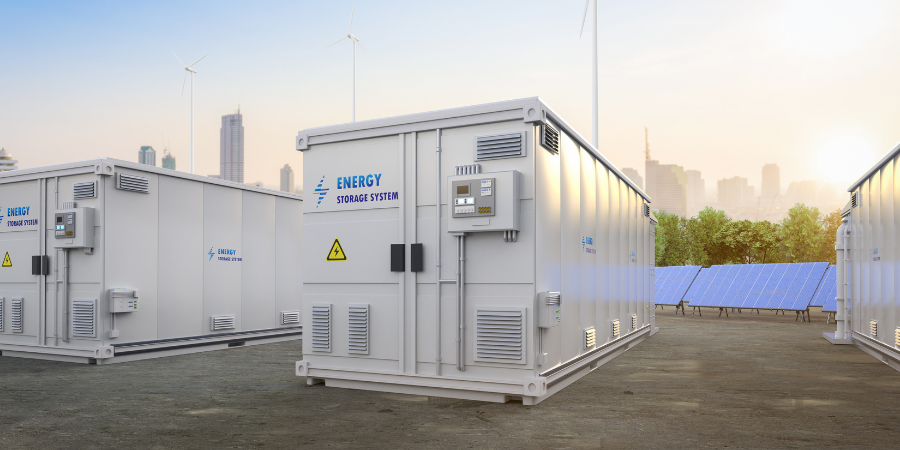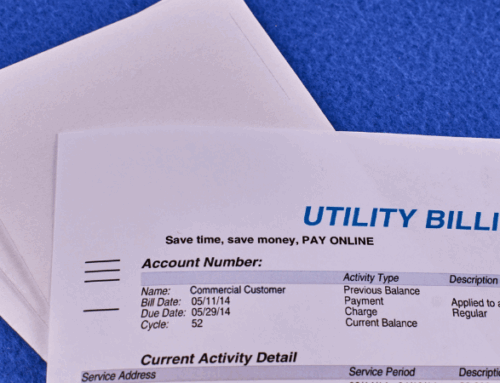Advanced energy storage technologies are becoming an essential part of the modern electricity grid as we know it today. As energy demand increases across the United States from AI data centers to economic growth, grid operators cannot keep up with our system’s aging infrastructure. Energy storage systems, such as lithium-ion batteries, allow system operators to shift energy from the central network to storage assets in seconds. This provides more flexibility during extreme grid events and is transforming several wholesale electricity markets. In this article, we will cover the various technologies making up these storage systems, the challenges they are facing integrating into an aging grid system, and the future of energy storage in the U.S. and across the globe.
What Are Advanced Energy Storage Technologies And Why Do They Matter?
Advanced energy storage technologies are comprised of grid-level battery storage systems that store and dispatch electricity in a bi-directional flow. These systems are becoming increasingly important for modern electricity grids for several reasons. First, they help to balance the surge of intermittent renewable energy generation coming from wind and solar power. As these renewable generation assets continue to boom, storage systems help them smooth out their production curves during periods of low generation (at night and when the wind is not blowing). Furthermore, energy storage technologies are playing a key role in broader energy transition strategies. These technologies help grid operators manage peak demand and improve overall grid reliability. By participating in wholesale markets, such as ancillary services, storage systems can even monetize these efforts and become revenue-producing assets.
The Energy Storage Landscape
There are several different energy storage technologies and makeups available on the market today, each offering different advantages and disadvantages. Let’s explore the storage landscape as we know it today.
Lithium-Ion Batteries
Lithium-ion batteries are the most widely used form of energy storage today, known for their high energy density and fast response times. They are commonly deployed in utility-grade solar systems to store excess solar energy and provide backup power during outages. These batteries are compact and scalable, making them ideal for both small businesses and large industrial applications. However, they can degrade over time and carry fire risk if not properly managed.
Flow Batteries
Flow batteries store energy using liquid electrolytes that circulate between external tanks, offering a longer cycle life than traditional batteries. They are ideal for long-duration energy storage applications, where extended discharge times are necessary. Flow batteries are safer and easier to scale than lithium-ion systems, making them well-suited for larger facilities and utility infrastructure. Their main tradeoff is a lower energy density and a higher initial installation cost.
Thermal Storage
Thermal energy storage systems work by storing excess energy in the form of heat or cold, often using materials like molten salts, ice, or chilled water. These systems are especially useful for facilities with heavy HVAC loads, such as schools, hospitals, and data centers. By shifting heating or cooling loads to off-peak hours, thermal storage helps reduce demand charges and improve energy efficiency. While less flexible than batteries, it’s a cost-effective solution in the right use case.
Compressed Air Energy Storage (CAES)
CAES systems store energy by compressing air into underground caverns or tanks and releasing it through turbines to generate electricity when needed. This technology is best suited for grid-scale storage and remote microgrid applications where space is not a constraint. CAES offers long-duration storage potential and can integrate with renewable energy sources to stabilize supply. The downside is that it requires specific geological conditions and has a relatively low round-trip efficiency.
Hydrogen Storage
Hydrogen energy storage converts surplus electricity into hydrogen through electrolysis, which can be stored and later reconverted into power or used as fuel. It’s a promising long-term storage solution that supports decarbonization across power, heat, and transportation sectors. Although still in its early stages of commercialization, its potential as a green, storable fuel is significant.
Gravity Storage
Gravity-based storage systems generate electricity by lifting and lowering heavy weights, converting gravitational potential energy into power. These systems are emerging as an innovative, low-maintenance alternative to chemical batteries, with a long operational lifespan. One example is using abandoned mine shafts to elevate concrete blocks during low-cost energy periods and release them to generate power during peak demand. Though still in early deployment, gravity storage offers high durability and minimal degradation.
Supercapacitors
Supercapacitors store energy electrostatically rather than chemically, enabling rapid charging and discharging cycles. They are often used alongside battery systems to smooth power fluctuations and provide short bursts of high power. While they don’t store large amounts of energy, their fast response makes them ideal for applications like frequency regulation and uninterruptible power systems (UPS).
How Energy Storage Improves Grid Operations And Reduces Costs for Businesses
Energy storage helps grid operators manage transmission flow more efficiently, ultimately reducing energy costs for end users. Here are some of the top influences on grid operations from energy storage systems:
Reserves & Regulation
The ancillary services markets, such as spinning/non-spinning reserves and frequency regulation, are wholesale market initiatives designed to increase grid resilience and reliability. Generating assets, such as charged batteries, are rewarded for dispatching energy into the grid in real-time to balance system frequency. Batteries are ideal for ancillary participation due to their fast response times and ability to take charge or discharge. By supporting these markets, batteries help to stabilize ancillary services fees, which are ultimately part of a retail electricity rate.
Additional Capacity
The need for generating capacity in many RTO/ISO markets is at the forefront of every regulator’s mind. Recently, PJM saw a drastic increase in capacity auction rates as a result of an imbalance in the capacity markets. Grid-connected battery storage systems can now participate in the capacity markets by offering power during peak periods. It is the hope of many system operators that these additional assets will help to curtail capacity costs for consumers.
Renewable Support
As more wind and solar generation is added to the grid, energy storage plays a critical role in solving the intermittency challenge of these resources. Batteries and other storage technologies can absorb excess renewable energy when production is high, such as midday solar peaks or windy nights, and discharge it when generation dips and demand rises. This time-shifting capability helps ensure a consistent and reliable power supply even when the sun isn’t shining or the wind isn’t blowing. For businesses, this translates into greater price stability and the ability to rely more heavily on clean energy sources without sacrificing price. Energy storage effectively bridges the gap between renewable variability and around-the-clock power reliability.
Commercial And Industrial Use Cases For Energy Storage
In addition to storage systems being ideal for wholesale grid participation, they can also deliver high value to commercial and industrial end users. Here are some examples of how batteries can benefit various retail market facilities.
Data Centers
Data centers need 24/7 uptime in order to serve their customers effectively. In the past, this meant installing expensive diesel or natural gas generators for power redundancy. Batteries, however, are slowly becoming a must-have for data center infrastructure. While most centers are not relying solely on battery storage for backup power, they are proving valuable due to their fast-response nature.
Hospitals
Hospitals and critical infrastructure facilities need power around the clock. Lives literally depend on it. Batteries are a great use case for these facilities as they can help to span the duration of a short-term power outage (4-6 hours). While most critical infrastructure facilities might elect for additional backup generators, batteries are quickly playing an important role in power uptime.
Manufacturing
Large manufacturers and industrial plants have costly power bills, especially during peak grid events. These peak events significantly drive up demand-related charges on manufacturers’ electricity bills, such as capacity and transmission costs. By implementing battery storage technologies to help with peak shaving, these facilities are able to significantly reduce energy consumption and expenses.
What Are Microgrids And How Does Storage Enhance Their Value?
Microgrids are local, decentralized energy systems that can operate independently or in conjunction with the main utility grid. They typically consist of on-site generation sources, such as solar panels or natural gas generators, paired with intelligent controls and energy storage systems. Storage enhances microgrid performance by enabling “islanding”, which allows the system to continue operating during a grid outage, ensuring power reliability for critical operations, or nearby offtakers. Additionally, battery storage helps balance generation and demand within the microgrid, improving efficiency and lowering operational costs. Storage allows businesses to maximize renewable energy usage, smooth power fluctuations, and reduce peak demand charges. This makes microgrids a powerful solution for resilience, sustainability, and long-term energy cost control.
Barriers To Widespread Adoption
Despite the growing advantages of energy storage, several challenges continue to hinder widespread adoption across the grid level, commercial, and industrial sectors. Understanding these barriers is crucial for businesses considering storage investments. Here are some of the most common roadblocks companies may face:
- High Upfront Capital Costs: Battery and storage system installations often require significant initial investment, even if long-term savings or revenue are substantial.
- Regulatory Uncertainty: Evolving rules around wholesale market participation and grid services can create confusion or limit revenue opportunities for storage assets.
- Technical Complexity: Properly sizing a storage system and integrating it with existing infrastructure requires careful engineering, load analysis, and complex interconnection approvals.
- Ongoing Maintenance & Operations: Storage technologies, particularly batteries, come with maintenance needs, degradation factors, and require 24/7 operational oversight if participating in wholesale markets.
Interested In Exploring Energy Storage Solutions?
Advanced energy storage technologies are revolutionizing how businesses and grid operators manage energy costs, enhance resilience, and participate in a smarter, cleaner future. But choosing the right solution requires careful evaluation of your facility’s energy profile, grid interconnection, and financial goals. Our team of experienced energy advisors works closely with energy brokers, business owners, and facility managers to navigate storage incentives, align system design with energy strategy, and unlock long-term savings. Whether you’re evaluating short-duration backup or long-duration market arbitrage, we have the insights and tools to help.
Contact us today to explore custom storage solutions for your business.



